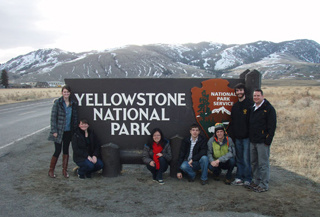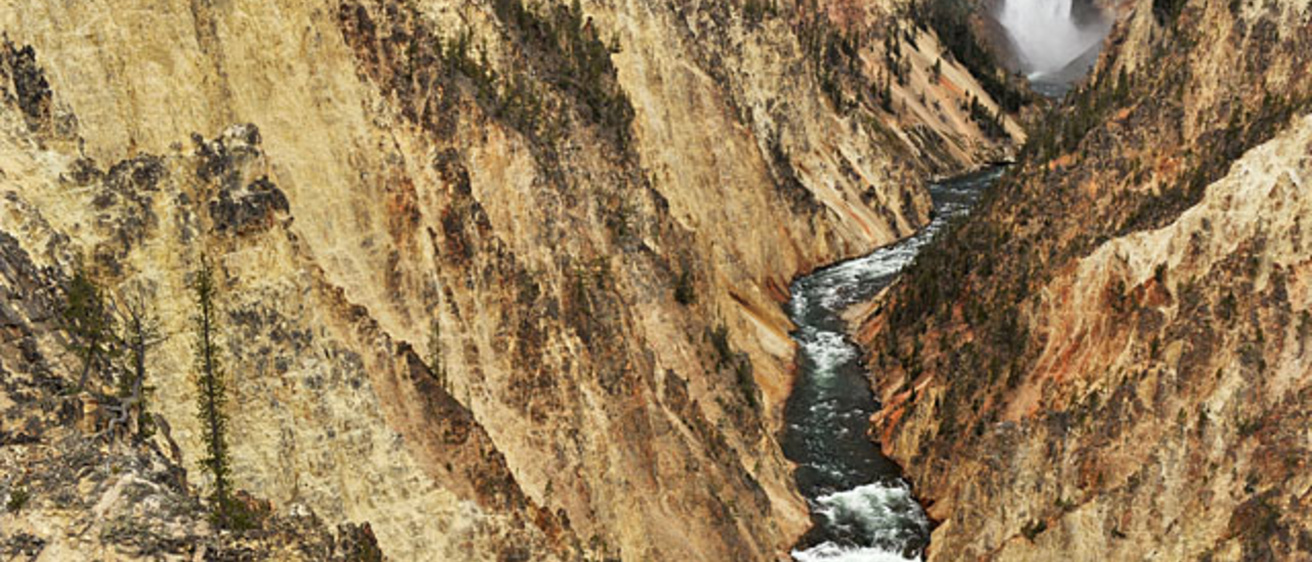A nonprofit group that runs educational tours in Yellowstone National Park is working with a group of University of Iowa marketing students to improve its share of visitors to the park.

The students, in a class taught by marketing faculty member David Collins in the Tippie College of Business, are helping the Yellowstone Association get an edge over dozens of other tour operators at a time when the number of visitors to the park is largely static.
The association is independent of the National Park Service and provides numerous services to the park, including financial support for libraries and educational programs, publishing free scientific and educational publications for park visitors, and operating a chain of bookstores. The Tippie students’ focus was on the association’s in-park tours that educate visitors about the ecology and wildlife in the park during tours that run from a few hours to up to a week.
“They’re not trying to see every sight there is to see in the park,” says Clay Bonwell, a senior from Cedar Falls. “Their focus is on tours that provide the most educational value and help the public understand the park better.”
The association offers field seminars to watch wolves and grizzlies, geysers and mud pots. They can learn more about nature photography or tracking animals or about the “ecology of fear” between wolves and elk in the park’s Lamar Valley. Its in-depth Lodging and Learning programs last from three to seven days and visitors can learn even more about the park’s vast ecology, geology, and history.
Convincing more Yellowstone visitors to take these tours, and subsequently become annual members, was the students’ task. They spent the first part of the semester looking at the association’s marketing material and examining its customer data, and studied recent trends in U.S. travel and tourism. They also completed a communications audit to compare its online presence to its competitors.
“Working with the University of Iowa has been a rewarding experience,” says Daniel Bierschwale, director of sales and marketing for the Yellowstone Association. “The enthusiasm of the project team made a lasting impression for our staff, and their market analysis will allow the Yellowstone Association to connect more visitors to Yellowstone National Park.”
The students then spent five days at Yellowstone over spring break, touring the park, meeting with representatives from the association, and sizing up the competition by taking a tour from a for-profit tour company.
“Working with the University of Iowa has been a rewarding experience. The enthusiasm of the project team made a lasting impression for our staff, and their market analysis will allow the Yellowstone Association to connect more visitors to Yellowstone National Park.”
—Daniel Bierschwale, director of sales and marketing for the Yellowstone Association
“There was a big difference in excitement between the two tour guides,” says Jessie Nelson, a senior from Coralville. “There was a lot more passion and enthusiasm in the association’s guide and it gave us an understanding of how guided tours can really enhance your understanding of the park.”
The students found that the association’s message was simply getting lost among the competition. With 31 other companies providing similar tourist services in Yellowstone, it’s hard to stand out, even if you’re the only one focusing on educational tours.
“They need to develop messaging that will resonate more with the audience that is looking for an educational experience at the park,” says Collins.
The second part of the project is developing a marketing plan that helps the association address these challenges, which the students will work on through April. Their final report is due May 1.
The project also had an educational value for the students.
“Just learning how to work with and respond effectively to what the client wants is valuable,” says Samantha Irey, a junior from Davenport.
It also provided its own unique workplace environment.
“We got to see bears and wolves, and when we were in a meeting one afternoon, we saw a coyote,” says Matt Lukas, a senior from Wheaton, Ill. “That’s not going to happen most places you work.”
Other students in the group included Brian Henry, a senior from Decorah, Iowa; Lin Sun, a junior from China; and Allison Burns, a junior from Batavia.
